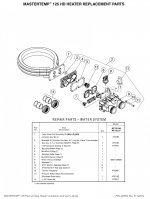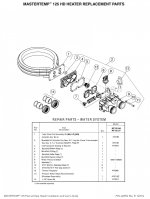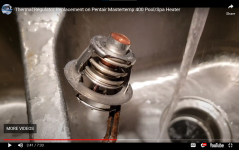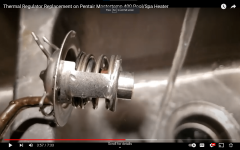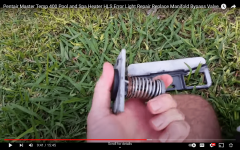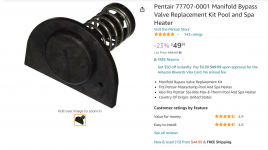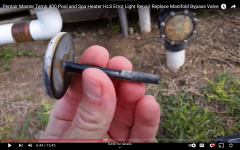Good Morning Everyone,
My first post here, I just finished installing a brand new Pentair Mastertemp 125 (Natural Gas Unit) and although it is working (heats the pool correctly with no errors or faults) it is squealing very loudly when in heating mode (heater in burning phase).
This is so loud that it literally wakes us up at night!
With multiple calls to Pentair they won't help me and say I am on my own because I did a homeowner install so unfortunately they are not warranting anything.
They had suggested a most probable mis-installation, however I have since proved this not to be the case. They had me validate the following:
I have included a video I did when doing the gas pressure tests, you will hear the whine (wait for it)...
Any other ideas out there?
Thanks very much in advance,
Gary
**Note, it would not let me attach the video (sorry, my first post, do I have to change it's format? it is a .mov file)...
My first post here, I just finished installing a brand new Pentair Mastertemp 125 (Natural Gas Unit) and although it is working (heats the pool correctly with no errors or faults) it is squealing very loudly when in heating mode (heater in burning phase).
This is so loud that it literally wakes us up at night!
With multiple calls to Pentair they won't help me and say I am on my own because I did a homeowner install so unfortunately they are not warranting anything.
They had suggested a most probable mis-installation, however I have since proved this not to be the case. They had me validate the following:
- Not large enough gas pipe - I showed photos of my installation showing 3/4 inch gas lines and total run from gas meter under 20 feet (they finally agreed that is not the issue)...
- Improper Gas Pressure at inlet - I took manometer readings for both static and dynamic pressures (they finally agreed that is not the issue)...
- Improper air volume - I looked around and could see the trees were still alive so...(they finally agreed that is not the issue)... (LOL)
I have included a video I did when doing the gas pressure tests, you will hear the whine (wait for it)...
Any other ideas out there?
Thanks very much in advance,
Gary
**Note, it would not let me attach the video (sorry, my first post, do I have to change it's format? it is a .mov file)...
Last edited:


